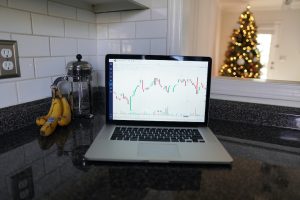Forex, also known as foreign exchange, is a decentralized global market where currencies are traded. It is the largest financial market in the world, with a daily trading volume of over $5 trillion. As an investor in the forex market, it is important to have a strategic plan to guide your investments and minimize risks. In this article, we will discuss how to create a strategic plan in forex.
Step 1: Define Your Goals
The first step in creating a strategic plan in forex is to define your goals. What do you want to achieve from your investment? Do you want to make a quick profit, or are you looking for long-term investment opportunities? Do you want to invest in a specific currency pair or multiple currency pairs? Do you want to trade actively or passively?
Defining your goals will help you determine the appropriate investment strategy and the level of risk that you are willing to take. It will also help you evaluate your performance and make necessary adjustments to your investment plan.
Step 2: Understand the Forex Market
The next step is to understand the forex market. This involves learning about the different currency pairs, the factors that influence currency exchange rates, and the various trading strategies that you can use to make profitable trades.
Some of the factors that influence currency exchange rates include economic indicators, political events, and global events such as natural disasters or pandemics. Understanding these factors will help you make informed decisions and minimize risks.
Step 3: Develop a Trading Strategy
Once you have defined your goals and understood the forex market, the next step is to develop a trading strategy. There are different trading strategies that you can use, including technical analysis, fundamental analysis, and sentiment analysis.
Technical analysis involves analyzing charts and using technical indicators to identify trends and potential trading opportunities. Fundamental analysis involves analyzing economic indicators and news events to determine the direction of currency exchange rates. Sentiment analysis involves analyzing market sentiment and investor behavior to identify potential trading opportunities.
It is important to choose a trading strategy that is aligned with your goals and risk tolerance. You should also test your strategy using a demo trading account before investing real money.
Step 4: Manage Your Risks
Managing your risks is a crucial part of creating a strategic plan in forex. This involves setting stop-loss orders to limit your losses in case the market moves against you, and taking profits when the market moves in your favor.
You should also diversify your portfolio by investing in different currency pairs and using different trading strategies. This will help you spread out your risks and minimize losses.
Step 5: Monitor Your Performance
Finally, it is important to monitor your performance and make necessary adjustments to your investment plan. This involves keeping track of your trades, analyzing your performance, and making adjustments to your trading strategy as needed.
You should also keep up to date with the latest news and events that could impact the forex market. This will help you make informed decisions and adjust your investment plan accordingly.
Conclusion
Creating a strategic plan in forex involves defining your goals, understanding the forex market, developing a trading strategy, managing your risks, and monitoring your performance. By following these steps, you can minimize risks and maximize your profits in the forex market. Remember to always stay informed and make informed decisions based on your investment goals and risk tolerance.





